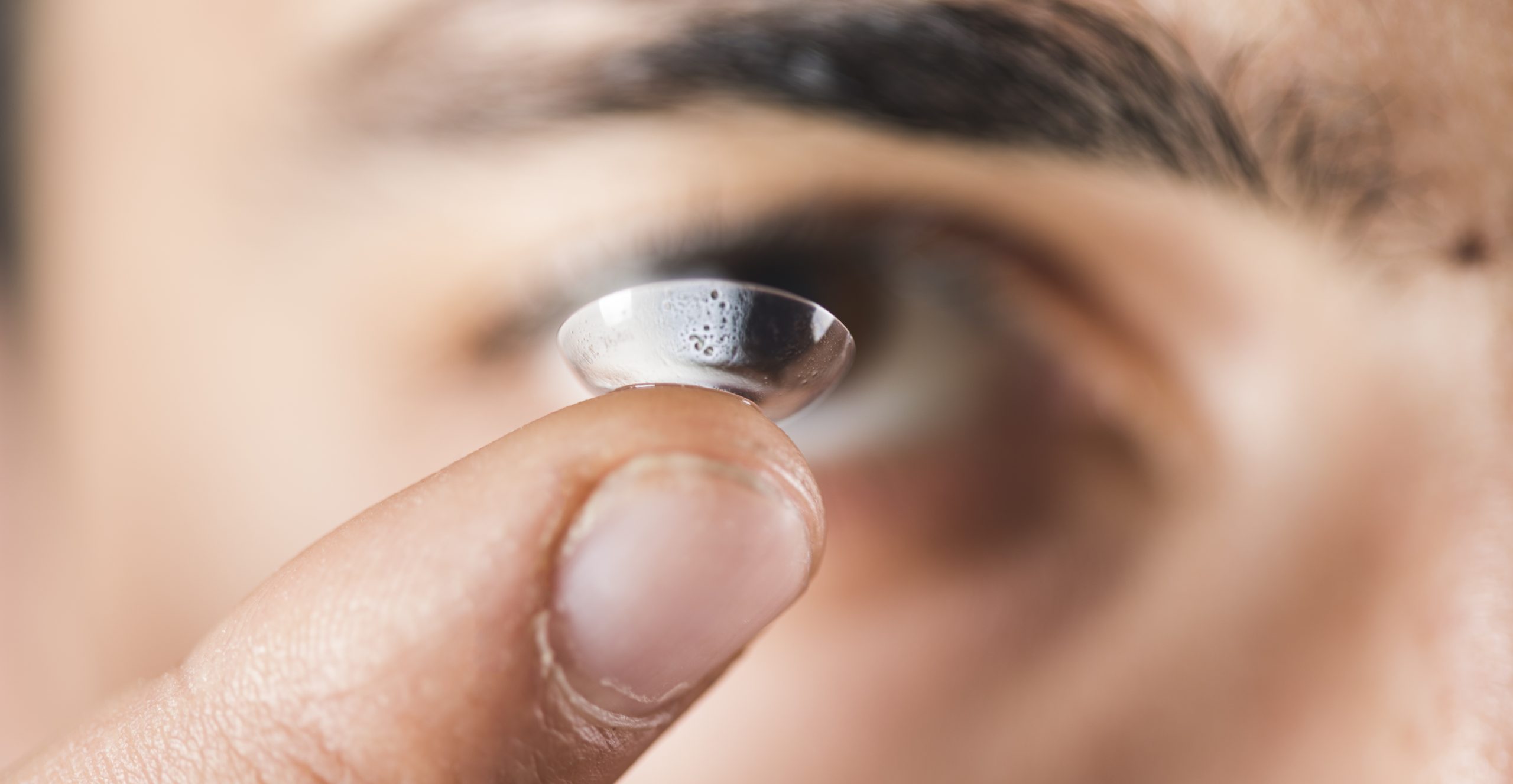Are you thinking about getting contact lenses? It’s important to know what to expect during the fitting process. This guide will walk you through the steps and highlight the benefits. First, a thorough eye examination is necessary to ensure no underlying issues. Then, you’ll have a consultation with the doctor to discuss your needs and preferences. Measurements will be taken, and your tear film will be evaluated. Afterward, you’ll receive a prescription and instructions. By going through this process, you’ll enjoy improved vision and convenience. Let’s dive into the details of your contact lens fitting journey.
Preparing for the Fitting
Before you can proceed with the contact lens fitting, it is important to prepare for the process by ensuring the health of your eyes and obtaining clearance from a qualified eye doctor. The pre-fitting examination is of utmost importance as it allows the eye doctor to assess your eye health and determine if there are any underlying issues that could be worsened by contact lenses. This examination ensures the safety and suitability of contact lenses for your eyes.
When preparing for the fitting, there are several factors to consider before choosing the right contact lenses. Your lifestyle, preferences, and any specific eye conditions or needs should be taken into account. Additionally, common challenges during the fitting process, such as discomfort or difficulty in inserting and removing the lenses, should be addressed.
Proper care and maintenance of contact lenses are essential to ensure their longevity and your eye health. Following the instructions provided by your eye doctor is crucial. They will guide you on how to clean, store, and handle your lenses correctly. Addressing any concerns or troubleshooting during the fitting process is also important. Your eye doctor will be able to provide advice and solutions to ensure a successful contact lens fitting experience.
The Fitting Process
During the contact lens fitting process, you will undergo a series of tests and evaluations to determine the most suitable contact lenses for your eyes. Proper evaluation is crucial to ensure that the lenses fit your eyes correctly and provide optimal vision correction. The fitting process begins with a consultation with your eye doctor, where you will discuss your needs, preferences, and overall eye health. Based on this information, your doctor will help you choose between daily disposable or overnight lenses, as well as soft or rigid gas permeable lenses. Measurements of your pupils, irises, and corneal curvature will be taken to ensure a proper fit. Additionally, a tear film evaluation will be conducted to ensure that your eyes are adequately lubricated for contact lens wear.
After the contact lens fitting, your eye doctor will provide you with a prescription and instructions on how to use and care for your contacts. It is important to follow these instructions carefully to ensure both the longevity of your lenses and the health of your eyes. Follow-up visits will be scheduled to monitor your eye health and finalize your prescription. It is recommended to have annual examinations to prevent any potential problems and to maintain good eye health.
The fitting process is essential for ensuring comfort and proper vision correction with contact lenses. By undergoing a thorough evaluation and choosing the right lenses for your eyes, you can enjoy improved vision and the convenience and freedom that contact lenses offer. Remember to prioritize your eye health by following up with regular check-ups and adhering to the recommended follow-up care.
After the Fitting
After the contact lens fitting, your eye doctor will provide you with a prescription and instructions on how to use and care for your contacts. It is important to follow these instructions carefully to ensure the longevity of your contacts and maintain good eye health. Your eye doctor may also schedule a follow-up visit to monitor your eye health and make any necessary adjustments to your contact lens prescription.
During the follow-up visit, your eye doctor will check how your eyes are adjusting to the contacts and address any concerns or issues you may have. This is an important step in the contact lens fitting process as it allows your eye doctor to ensure that the contacts are providing you with optimal vision and comfort.
In addition to the follow-up care, it is crucial to practice good contact lens care on a daily basis. This includes cleaning and disinfecting your contacts as instructed by your eye doctor, properly storing them when not in use, and replacing them according to the recommended schedule. By maintaining proper contact lens care, you can reduce the risk of eye infections and other complications.
Lastly, it is important to give yourself time to adjust to wearing contacts. It may take a few days or weeks for your eyes to fully adapt to the sensation of wearing contacts. If you experience any discomfort or vision changes, contact your eye doctor immediately.
Benefits of Contact Lens Fitting
One benefit of contact lens fitting is that it provides you with improved vision without the need for glasses. Contact lens fitting is an essential part of the process to ensure that the lenses are suitable for your eyes and provide optimal vision correction. During the fitting procedure, your eye doctor will evaluate the suitability of the lenses by measuring your pupils, irises, and corneal curvature. They will also evaluate your tear film to ensure that the lenses fit properly and comfortably on your eyes.
Another benefit of contact lens fitting is the greater convenience and freedom it offers during various activities. Unlike glasses, contact lenses do not get in the way or hinder your movements. Whether you’re playing sports, going for a swim, or simply enjoying a night out, contact lenses provide a clear and unobstructed field of vision.
Additionally, contact lens fitting allows you to change your eye color if you desire. Colored contact lenses offer the opportunity to enhance or alter your natural eye color, allowing for a fun and temporary transformation.
Contact lens fitting is also suitable for individuals with certain eye conditions. Depending on your specific needs, contact lenses can correct different types of refractive errors such as nearsightedness, farsightedness, and astigmatism.
Key Steps in the Fitting Process
First, your eye doctor will conduct a thorough examination of your eyes to ensure a safe and suitable contact lens fitting. This examination will involve assessing your eye health and determining your prescription. The doctor will measure the size and curvature of your cornea, as well as the size of your pupils and irises. They will also evaluate the tear film of your eyes to ensure proper fit and comfort.
Once your prescription and measurements have been determined, the next step is to evaluate the comfort and suitability of different contact lens options. Your eye doctor will have you try on different pairs of contact lenses to see which ones feel the most comfortable and provide optimal vision correction. They will also show you how to properly insert and remove the lenses, especially if you are a first-time wearer.
After the initial fitting, you will be given a trial pair of lenses to wear for a few days. This trial period allows you to test the lenses in real-life situations and assess their comfort and performance. A follow-up appointment will be scheduled to check how your eyes are adjusting to the lenses and to make any necessary adjustments.
During the follow-up appointment, your eye doctor will finalize your contact lens prescription and provide you with instructions on how to use and care for your lenses. They may also recommend annual check-ups to monitor your eye health and ensure that your contact lenses continue to fit properly. Remember, the key steps in the contact lens fitting process include determining your prescription, evaluating comfort, ensuring proper fit, having a trial period, and scheduling a follow-up appointment.
Choosing the Right Contacts
To choose the right contacts, consider your eye doctor’s recommendations and your specific vision needs. Your eye doctor will guide you in selecting the most suitable contact lens type based on various factors such as your lifestyle, eye health, and any specific conditions you may have. Here are some key points to keep in mind when choosing contacts:
- Contact Lens Types: There are different types of contact lenses available, including daily disposable lenses, extended wear lenses, and colored lenses. Consider your preferences and the level of convenience you desire when deciding which type to choose.
- Contact Lens Materials: Contact lenses are made from various materials, such as soft hydrogels and rigid gas permeable materials. Your eye doctor will recommend the best material for your comfort and eye health.
- Contact Lens Care: Proper care and maintenance of your contact lenses are crucial for maintaining good eye health. Follow the instructions provided by your eye doctor on how to clean and store your lenses to prevent infections and complications.
- Contact Lens Prescription: It is essential to have a valid contact lens prescription to ensure the correct fit and vision correction. Your eye doctor will measure your eye parameters, such as corneal curvature and pupil size, to determine the appropriate prescription.
- Contact Lens Brands: There are various contact lens brands available, each offering different features and benefits. Your eye doctor will recommend trusted and reliable brands based on your specific needs.
Frequency of Contact Lens Fitting
You should schedule an annual contact lens fitting to ensure comfortable and safe contact lens wear. Regular fittings are important because your eyes can change over time, and a proper fitting will ensure that your contact lenses continue to provide optimal vision correction and comfort. During the fitting, your eye doctor will evaluate your eye health, measure your corneal curvature, and assess the fit of your current contact lenses. They will also discuss any changes in your prescription, address any issues with dry eyes, and recommend suitable contact lens brands based on your needs and preferences.
To emphasize the importance of regular contact lens fittings, here is a table highlighting key reasons why scheduling an annual fitting is crucial:
| Reasons for Annual Contact Lens Fitting |
|---|
| 1. Changing Prescription |
| 2. Monitoring Dry Eyes |
| 3. Addressing Contact Lens Complications |
| 4. Recommending Suitable Contact Lens Brands |
| 5. Ensuring Proper Contact Lens Maintenance |





